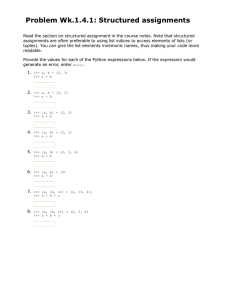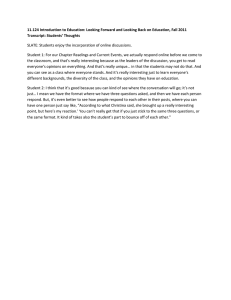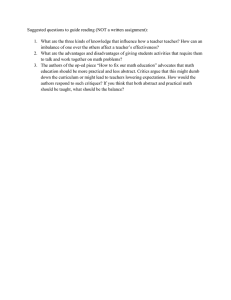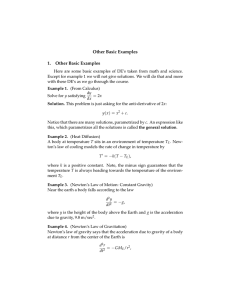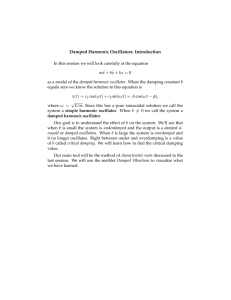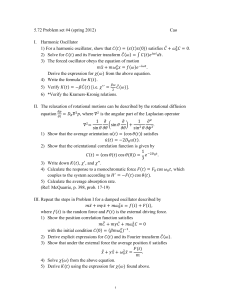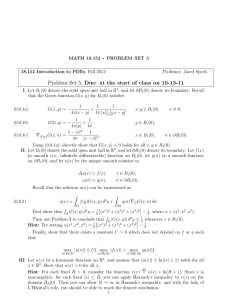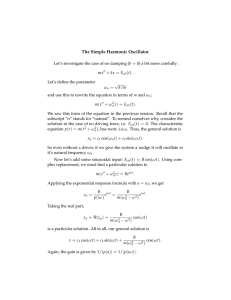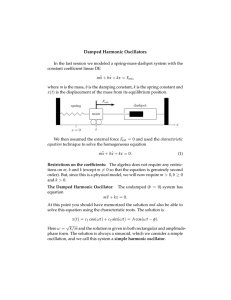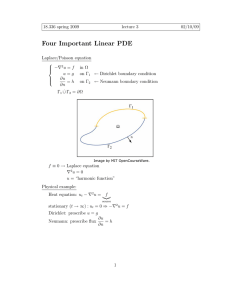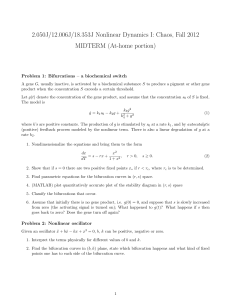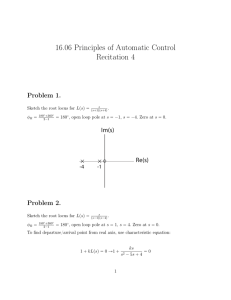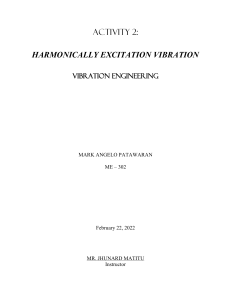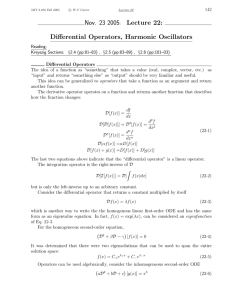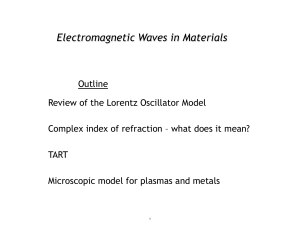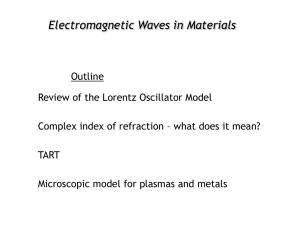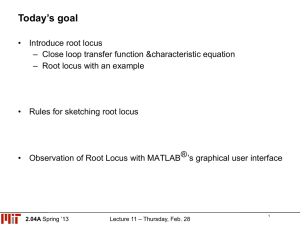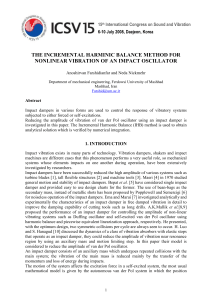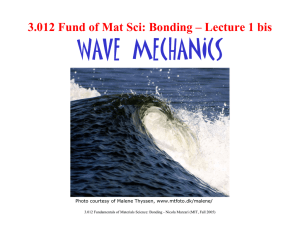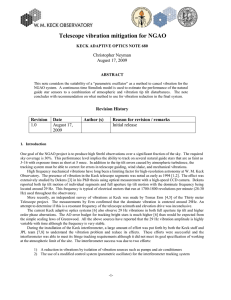Document 13352603
advertisement
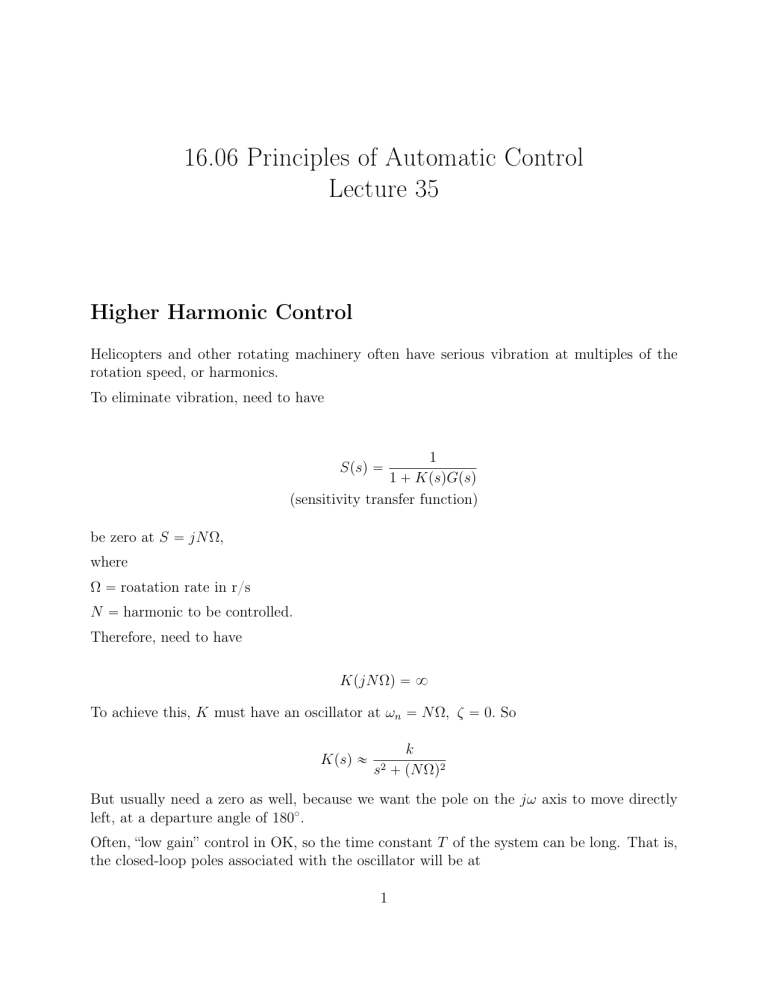
16.06 Principles of Automatic Control
Lecture 35
Higher Harmonic Control
Helicopters and other rotating machinery often have serious vibration at multiples of the
rotation speed, or harmonics.
To eliminate vibration, need to have
1
1 ` KpsqGpsq
psensitivity transfer functionq
Spsq “
be zero at S “ jN Ω,
where
Ω “ roatation rate in r/s
N “ harmonic to be controlled.
Therefore, need to have
KpjN Ωq “ 8
To achieve this, K must have an oscillator at ωn “ N Ω, ζ “ 0. So
Kpsq «
s2
k
` pN Ωq2
But usually need a zero as well, because we want the pole on the jω axis to move directly
left, at a departure angle of 180˝ .
Often, “low gain” control in OK, so the time constant T of the system can be long. That is,
the closed-loop poles associated with the oscillator will be at
1
S“´
1
˘ jN Ω
T
where T is large, compared to 1{Ω.
jω
jNΩ
σ
-1
T
-jNΩ
For a given Gpsq, how do we get poles at desired location?
We could use Root locus methods; however, we don’t really know Gpsq,we only know Gpjωq.
Where are roots of 1 ` KpSqGpsq ?
If we take
Kpsq “
as ` bN Ω
as ` bN Ω
“
2
2
s ` pN Ωq
ps ´ jN Ωqps ` jN Ωq
then near s “ jN Ω,
KpsqGpsq « GpjN Ωq
paj ` bqN Ω
1
2jN Ω s ´ jN Ω
Using this approximation and setting KG “ ´1at s “ ´ T1 ` jN Ω, we find
˘
2 `
1
a “ Re
T
GpjN Ωq
˘
2 `
1
b “ ´ Im
T
GpjN Ωq
2
Example:
1
s`1
Ω “1, N “ 1, T “ 10
ñ a “0.2, b “ ´0.2
s´1
ñ Kpsq “0.2 2
s `1
Gpsq “
Root locus:
jω
σ
3
MIT OpenCourseWare
http://ocw.mit.edu
16.06 Principles of Automatic Control
Fall 2012
For information about citing these materials or our Terms of Use, visit: http://ocw.mit.edu/terms.
